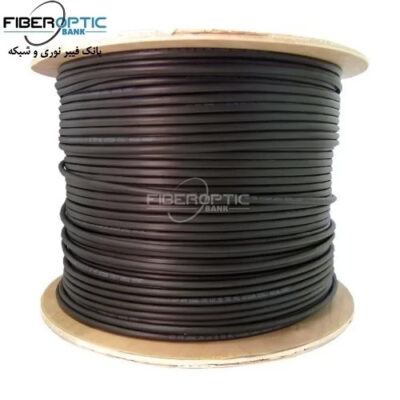Artificial intelligence and the rise of optical computing
Optical computing is a revolutionary technology that has the potential to change the way we think about computation. Unlike traditional computers, which use electrical signals to perform calculations, optical computing uses light. This allows for a much higher frequency of data processing, making it possible to run large and complex calculations at incredibly fast speeds.
One of the key technologies behind optical computing is photonic computing, which uses photons to perform calculations instead of electrons. This allows for a more efficient and synthetic approach to computation, as photons can be easily manipulated and controlled to perform a wide range of tasks.
Another key technology in the field of optical computing is integrated photonics. This refers to the integration of photonic components into a single, compact device, allowing for a more efficient and scalable approach to computation.
Overall, the use of these technologies has the potential to revolutionize the way we think about computation and data processing. With optical computing, we can solve problems that are currently beyond the capabilities of even the most advanced computers and do so at speeds that are unimaginable with today’s technologies.
Researchers have discovered a way to run light-based logic gates, which are a million times faster than conventional electronic logic gates found in traditional computer processors. These logic gates, which are made up of Boolean functions and run binary routines, are typically run electronically. However, the new method uses light to perform the same functions, leading to significantly faster processing speeds.
What is optical computing?
An optical computer, also known as a photonic computer, is a device that performs digital computations using photons in visible light or infrared (IR) beams as opposed to electric current. The speed of an electric current is just 10% of the speed of light. One of the reasons that led to the development of optical fiber was the restriction on the rate at which data can be transmitted over long distances. A computer that can do processes ten or more times quicker than a traditional electronic computer might one day be created by implementing some of the benefits of visible and/or IR networks at the device and component size.
In contrast to electric currents, visible and infrared beams flow across one another without interacting. Even when they are constrained to essentially two dimensions, many (or many) laser beams can be shone so that their paths cross, but there is no interference among the beams. Wiring in three dimensions is important because electric currents must be directed around one another. As a result, an optical computer may also be smaller in addition to being significantly faster than an electronic one.
Although some engineers predict that optical computing will become widespread in the future, most experts agree that changes will take place gradually in specific niches. There are some optical integrated circuits that have been developed and produced. (Optical circuits have been used in the construction of at least one full-featured, albeit somewhat big, computer.) By dividing the image into voxels, a three-dimensional, full-motion video may be broadcast via a network of fibers. Even though the data impulses used to control some optical devices are visible light or infrared waves, electronic currents can nevertheless operate them.
Digital communications, where fiber optic data transfer is already prevalent, is where optical technology has advanced the most. The ultimate objective is the so-called photonic network, where each source and destination are connected only by visible and infrared photons. Laser printers, photocopiers, scanners, and CD-ROM drives and their relatives all use optical technology. All of these devices, however, rely to some extent on ordinary electronic circuits and parts; none of them are entirely optical.
How does optical computing work?
Optical computing is similar to traditional computing in that it uses logic gates and binary routines to perform calculations. However, it differs in the way that these calculations are performed. In optical computing, photons are generated by LEDs, lasers, and other devices and are used to encode data in a similar way to electrons in traditional computing. This allows for much faster and more efficient computation, as photons can be easily manipulated and controlled to perform a wide range of tasks.
With the ultimate goal of developing an optical computer, there are studies focusing on the design and implementation of optical transistors. A light beam can be efficiently blocked by a polarizing screen that rotates 90 degrees. Dielectric components that have the capacity to operate as polarizers are also used to create optical transistors. Despite some technical difficulties, optical logic gates are fundamentally possible. They would consist of a single control and numerous beams that would provide the right logical results.
One major advantage of traditional electronic computers is that silicon channels and copper wires can be used to guide and control the movement of electrons. This allows for efficient and reliable computation.
In optical computing, a similar effect can be achieved using plasmonic nanoparticles. These particles can guide and control photons’ movement, allowing them to turn corners and continue on their path without significant loss of power or conversion to electrons. This makes it possible to create compact and efficient optical computing devices.

Most parts of an optical chip are similar to a traditional computer chip, with electrons being used for processing and transforming information. However, the interconnects, which are used for shuttling information between different areas of the chip, have been significantly changed.
In optical computing, light is used instead of electrons for shuttling information. This is because light can be easily contained and has the advantage of less information loss during travel. This is especially useful in situations where the interconnects may heat up, which can slow down the movement of electrons. By using light for information shuttling, it is possible to create faster and more efficient optical computing devices.
Researchers are hoping that the use of light for information shuttling in optical computing will result in the development of exascale computers. Exascale computers are capable of performing billions of calculations every second, which is 1000 times faster than the current fastest systems. By using light for communication, it is possible to achieve this level of processing speed, resulting in more powerful and efficient computing devices.
The advantages and disadvantages of optical computing
The advantages of optical computing are:
- Fast density, small size, minimal junction heating, high speed, dynamic scaling and reconfigurability into smaller/larger networks/topologies, vast parallel computing capability, and AI applications are just a few of the primary benefits of optical computers.
- Optical interconnections have various benefits in addition to speed. They are not prone to electrical short circuits and are immune to electromagnetic interference.
- They provide low-loss transmission and a lot of bandwidth, enabling multiple channels to communicate simultaneously.
- Data processing on optical components is less expensive and simpler than data processing on electronic components.
- Photons do not interact with one another as quickly as electrons do since they are not charged. This provides a further benefit because full duplex functioning allows light beams to pass across one another.
- Compared to magnetic materials, optical materials are more accessible and have higher storage density.
The disadvantages of optical computing are:
- It’s difficult to develop photonic crystals.
- Due to the interaction of several signals, computation is a complex process.
- Current optical computer prototypes are pretty bulky in size.
Optical computing vs quantum computing
Optical computing and quantum computing are two different technologies that have the potential to revolutionize the way we think about computation and data processing.
Optical computing uses light to perform calculations and data processing tasks, while quantum computing uses the principles of quantum mechanics to perform calculations.
One of the key differences between the two technologies is the speed at which they are able to perform calculations. Optical computing is able to operate at much higher speeds than traditional electronic computing and is also faster than quantum computing in some cases. This is due to the fact that photons, the particles of light used in optical computing, can be easily manipulated and controlled to perform a wide range of tasks.
On the other hand, quantum computing has the potential to solve certain problems that are currently beyond the capabilities of even the most advanced computers. This is due to the unique properties of quantum mechanics, which allow for the creation of highly complex and entangled states that can be used to perform calculations.
Overall, both optical computing and quantum computing have the potential to revolutionize the field of computation and data processing. While they have different strengths and limitations, both technologies offer exciting new possibilities for solving complex problems and advancing our understanding of the world.
Optical computing companies
If you’re interested in learning more, we’ve put together the most thorough list of the best quantum computing companies out there!
Conclusion
In conclusion, we see exciting developments in the use of lasers and light in computing. As optical technology continues to advance, we can expect to see it being used in a wide range of applications, from parallel processing and storage area networks to optical data networks and biometric storage devices.
The processors of today’s computers now contain light detectors and tiny lasers that facilitate data transmission through optical fibers. Some companies are even developing optical processors that use optical switches and laser light to perform calculations. Intel, one of the leading proponents of this technology, is creating an integrated silicon photonics link that can transmit 50 gigabytes per second of uninterrupted information.
Source: dataconomy
Related products...
fiber-optic-cable
Optical fiber cable 144 dry core 12×12 channel OCUC brand PBN
fiber-optic-cable
fiber-optic-cable















[ratings]